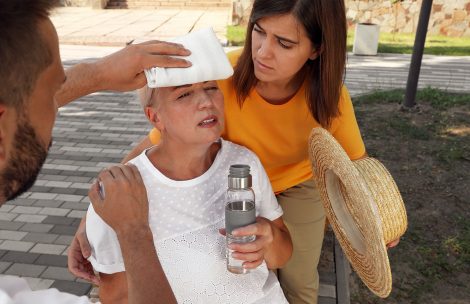Extreme heat is more than uncomfortable, it can be dangerous
Heat-related illness resulted in 51 hospitalizations, 13 deaths in Colorado last year
PRESS RELEASE
June 28, 2024
Coloradans have experienced seasonal hot days and extreme heat events for decades. However, as temperatures increase and heat waves last longer, and become more frequent and dangerous, communities must plan when these events occur.
Heat is the leading cause of weather-related deaths in the U.S., however, not all hot days rise to the level of extreme heat. Extreme heat events are when temperatures are well above normal conditions consecutively for days and nights in an area. Colorado is tracking episodes of extreme heat and monitoring heat-related illnesses. In 2023, heat-related illness in Colorado resulted in 474 people visiting an emergency department, 51 people being hospitalized, and 13 deaths.
The National Weather Service Heat Index is used to trigger heat advisories when the heat level rises to dangerous levels. During a heat advisory, local jurisdictions may set up cooling centers, establish methods for distributing water, or track the movement of impacted persons.
Heat emergencies are getting worse, and these conditions can have environmental impacts on ecosystems, furthering the risk of drought and wildfire. Extreme heat disproportionately impacts certain people making it even more important to take precautions if you are in one of these categories.
• Chronic conditions or injuries or taking certain medications that increase risk
• Older adults and children
• Physical, developmental, or intellectual disabilities
• Limited English proficiency
• Low income
• Pregnant
• Public transit users
• Experiencing homelessness
• Athletes
• Socially isolated
• Without air conditioning
• Incarcerated
Even if you do not fall into one of these categories, prolonged periods in the heat can put you at risk.
Protect yourself and those in your care from heat-related illness
• Have access to air conditioning or a cooling center
• Use sunscreen and participate in outdoor activities during the coolest parts of the day
• Wear lightweight, light-colored, and loose-fitting clothing
• Avoid hot and heavy meals
• Check on people at risk at least twice a day
Extreme heat can cause heat-related illnesses, such as heat exhaustion and heat stroke
Heat stroke is a medical emergency, if you see someone with the following symptoms call 911.
• Hot, red, dry, or damp skin
• Fast, strong pulse
• Headache
• Dizziness
• Nausea
• Confusion
• Losing consciousness (passing out)
What to do:
While you wait for medical assistance to arrive, move the person to a cooler place. Help lower the person’s temperature with cool cloths or a cool bath. Do not give the person anything to drink.
Heat exhaustion can lead to heat stroke if precautions aren’t taken.
What to look for:
• Cold, pale, and clammy skin
• Fast, weak pulse
• Nausea or vomiting
• Muscle cramps
• Tiredness or weakness
• Dizziness
• Headache
• Fainting (passing out)
What to do:
• Loosen your clothes
• Put cool, wet clothes on your body or take a cool bath
• Sip water
You can find more information on heat and your health and track heat patterns on the Centers for Disease Control HeatRisk webpage.


